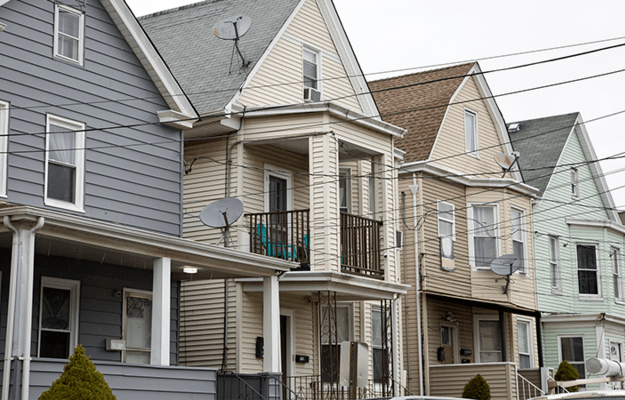
(divanov/Shutterstock)
Why Are Black and Latinx Homeowners Less Likely to Refinance Their Mortgages?
- Title:
-
Mortgage Prepayment, Race, and Monetary Policy
- Author:
-
Kristopher Gerardi, Paul Willen, and David Hao Zhang
- Source:
- Publication Date:
-
2020
Refinancing at low interest rates is an effective way to reduce monthly costs and generate savings over the life of a loan. Although many Americans take advantage of refinancing options, not everyone refinances equally. At the end of 2012, Black borrowers with mortgages insured by Fannie Mae or Freddie Mac paid interest rates approximately 60 basis points higher than those paid by white borrowers. Structural racism embedded in the US housing system has led to long-standing asymmetry in income, credit scores, equity, and other factors that inhibit refinancing for borrowers of color. This study analyzes the differences in prepayment behavior across racial groups and finds wide refinancing disparities between Black, Latinx1, and white borrowers.
To understand Black and Latinx borrowers’ refinancing behaviors, the researchers used linear probability models to examine differences in mortgage prepayment behavior related to refinancing and home sales, as well as differences in the propensity to default across racial or ethnic groups. They also used this model to explore how expansionary monetary policy, which leads to lower interest rates, exacerbates gaps in refinancing behaviors across racial and ethnic borrowers. In 2008, the Federal Reserve explicitly targeted mortgage rates and used an unconventional monetary expansion tool, quantitative easing (QE1), which consisted of buying trillions of dollars of government bonds and mortgage-backed securities. Because the launch of QE1 was unanticipated by mortgage borrowers, it was an ideal period to study the monetary policy effects on refinancing behavior.
The study found that Black and Latinx borrowers face challenges refinancing in part because of structural barriers that have led to, on average, lower credit scores, equity, and income. However, after holding those factors constant, the researchers found that Black and Latinx borrowers are still less likely to take advantage of falling interest rates and that those factors account for only 80 percent of the racial refinancing gap, suggesting other social factors omitted from this analysis could be at play.
Key findings
- Between 2005 and 2020, Black and Latinx borrowers with mortgages insured by Fannie Mae or Freddie Mac paid interest rates almost 50 basis points higher than those paid by white borrowers, a difference explained by white borrowers being more aggressive in taking advantage of ways to lower mortgage costs, such as refinancing in times of lower rates.
- When controlling for factors such as zip code, income, credit score, and gender, the study found Black borrowers are 0.15 percentage points less likely to refinance than white borrowers, suggesting Black and Latinx mortgagees benefit less from expansionary monetary policy.
- When they analyzed the six months before and six months after the Federal Reserve’s QE1 policy, the authors found the quarterly refinance probability for white borrowers increased by 3.2 percentage points (per quarter), compared with only 1 percentage point for Black borrowers.
- The Federal Reserve’s QE1 policy led to a 21-basis-point drop in the rate for an outstanding mortgage for the average white borrower versus a drop of only 9 basis points for the average Black borrower six months after the announcement.
- The difference the authors find in prepayment speeds suggests that in a competitive market, lenders would offer lower rates to Black and Latinx households. However, given that all borrowers are charged the same interest rate, Black and Latinx borrowers are essentially being charged a higher interest rate relative to the values of their loans.
- Other factors that could explain the racial disparity in refinancing could include factors omitted from this analysis, like financial literacy, income and employment challenges that make refinancing difficult, or differing social networks where information on refinancing opportunities is widely shared.
Policy implications
- Because Black and Latinx borrowers are less responsive to interest rates, monetary expansion disproportionately benefits white borrowers and contributes to significant disparities in the average interest rate that Black and Latinx borrowers pay.
- To help close the racial refinancing gap and create a more equitable distributional impact of monetary policy, policymakers can promote adjustable-rate mortgages (ARMs) that don’t require refinancing.
- Policymakers could also develop mortgages that combine benefits from ARMs and FRMs. “Ratchet” mortgages, which adjust down but not up, have been explored.
- Complementary policies that make it easier and less costly to refinance, such as streamlined refinancing programs, could help close mortgage pricing disparities.
Though the study uses the term “Hispanic,” we’ve chosen to use the term “Latinx” because it may be more inclusive of how some members of this group identify. However, we recognize not all members of this group identify with this term.


